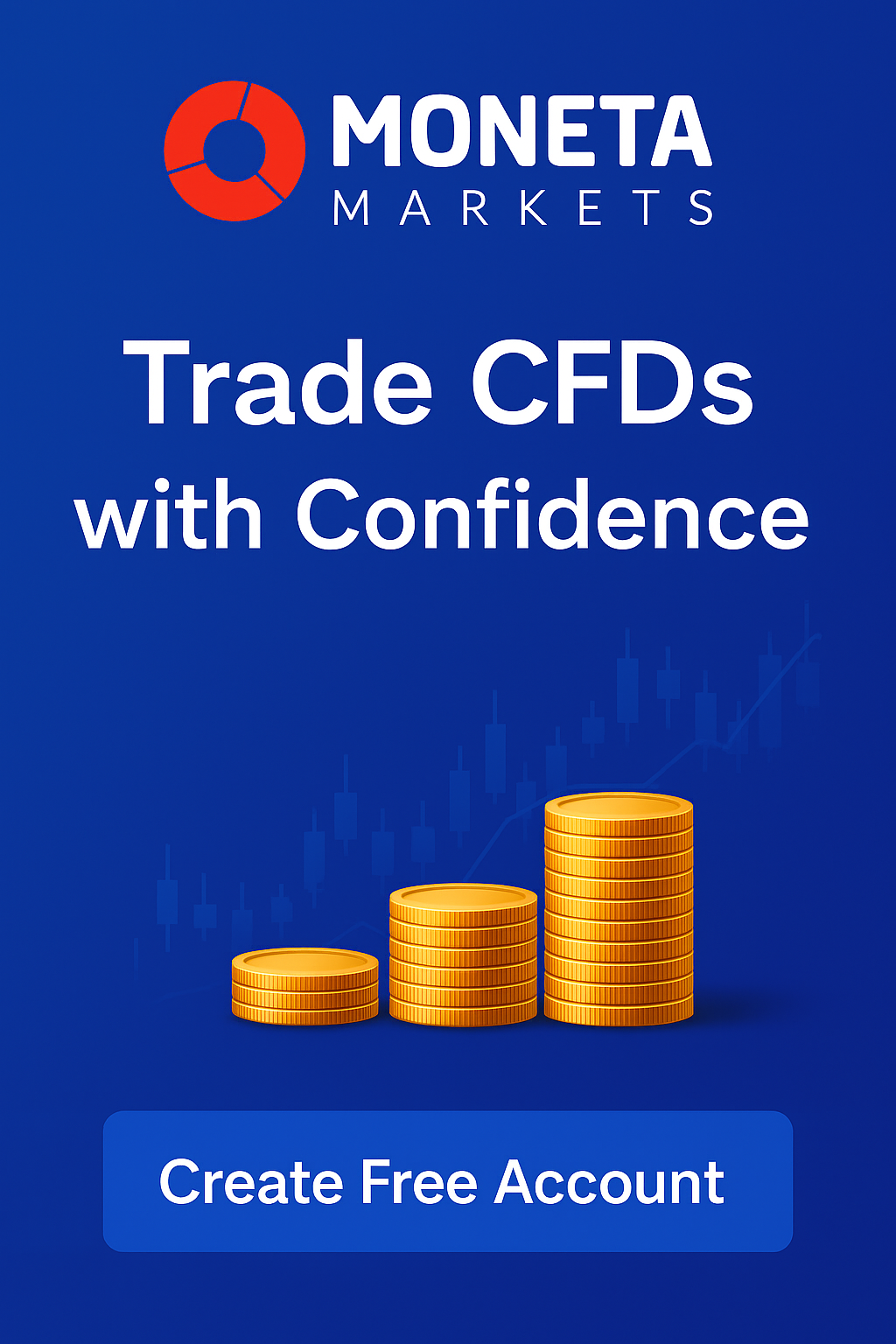CFD Contracts Explained: A Beginner’s Guide to Understanding Contracts for Difference
Feeling lost in the world of finance, especially with all the talk about the U.S. stock market’s ups and downs? Maybe you just got your paycheck and are thinking, “How can I start investing?” You’re not alone. Many Taiwanese investors are curious about global markets and new financial tools.
This article will break down what CFD contracts are, how they work, and what you need to know before diving in. We’ll answer questions like: What are CFD contracts, how can they potentially help me, and what are the risks involved? Let’s get started!
What Exactly Are CFD Contracts?
A CFD, or Contract for Difference, is essentially a financial agreement between two parties to exchange the difference in the price of an asset from the time the contract is opened until it’s closed. Think of it as betting on whether the price of something will go up or down, without actually owning the thing itself. It’s important to understand this concept before you start trading.

CFD Full Form: Contract for Difference
The name “Contract for Difference” pretty much sums it up. It’s a contract. The “difference” refers to the change in price between when you open and close the position. If you predict correctly, you profit from that difference; if not, you lose.
For example, if you think the price of TSMC stock will go up, you enter a CFD contract. If the price increases as predicted, the seller pays you the difference. This makes CFD contracts a useful, if complex, tool.
The Core Concept: Speculating on Price Movements
The key to understanding CFDs is realizing you are speculating, or guessing, on price movements. You’re not buying or selling the underlying asset, like a share of stock. Instead, you are entering into a contract based on your prediction of its future price.
Many beginner investors in Taiwan make the mistake of thinking they own the asset when trading CFD contracts. This is a big misunderstanding. With CFD contracts, you only profit (or lose) based on the price change of the asset.
How CFD Trading Works: Mechanics Behind the Market
CFD trading involves a straightforward process of opening a position, monitoring price fluctuations, and then closing the position to realize your profit or loss. You’re essentially making a bet with your broker. Understanding how this process works is critical to trading CFD contracts responsibly.

Opening and Closing a Position
To start trading CFDs, you first choose an asset you want to speculate on. Then, you decide whether you believe the price will go up (“buy” or “go long”) or down (“sell” or “go short”). This opens your CFD contract.
When you want to finalize your position, you close the contract. The difference between the opening and closing price determines your profit or loss. Using a broker’s platform is essential for managing these CFD contracts effectively.
Going Long vs. Going Short: Profiting from Both Directions
One of the appealing aspects of CFDs is the ability to profit whether the market goes up or down. “Going long” means you buy a CFD contract, expecting the price to increase. Conversely, “going short” means you sell a CFD contract, anticipating a price decrease.
For example, if you think the price of gold will drop, you can “go short” on a gold CFD contract. This ability to profit from both rising and falling markets makes CFD contracts attractive to many traders.
Exploring the Assets: What Can You Trade with CFDs?
CFDs provide access to a wide array of financial markets. You can trade CFD contracts on everything from foreign exchange (forex) and stocks to indices, commodities, and even cryptocurrencies. This versatility is a major draw for traders seeking diverse opportunities.

Common CFD Markets: Forex, Stocks, Indices, Commodities & More
Some of the most popular CFD markets include forex (currency pairs like USD/TWD), individual stocks (like TSMC or Apple), major indices (like the S&P 500), and commodities (like gold or oil). Each market has its own characteristics and volatility, so choose carefully.
Trading CFD contracts on these markets allows you to participate in global financial movements. Understanding each market’s unique dynamics is key to successful CFD contracts trading.
Diversification Opportunities and Market Access
CFDs allow you to diversify your trading portfolio relatively easily. With a single account, you can trade various asset classes without needing to directly purchase them. This is especially helpful for smaller investors.
The ability to trade CFD contracts across different markets opens up many possibilities. However, remember that greater diversification does not eliminate risk. Always consider the specific risks associated with each type of CFD contract.
Key Advantages: Why Traders Consider CFDs
One of the biggest draws of CFDs is the potential for leveraged trading. This means you can control a large position with a relatively small amount of capital. This leverage can amplify your potential returns, but also your potential losses.

Leverage: Amplifying Potential Returns
Leverage is often presented as the main benefit of trading CFDs. For example, with a leverage of 10:1, you can control a position worth NT$100,000 with only NT$10,000 of your own capital. This can significantly increase your profits if your prediction is correct.
However, it’s crucial to remember that leverage is a double-edged sword. While it can magnify gains, it can also drastically magnify losses. Understanding and managing leverage is essential when trading CFD contracts.
Global Market Access and Trading Flexibility
CFDs provide easy access to global markets from a single trading platform. You can trade assets from around the world without needing to open multiple accounts in different countries. This accessibility makes them appealing to many traders.
Additionally, CFD contracts offer flexibility in terms of trading hours. Many markets are open 24 hours a day, five days a week, allowing you to trade at your convenience. This global access and flexibility are key advantages of CFD contracts.
The Risks You Must Know: Why CFDs Are High-Risk Investments
CFDs are considered high-risk investments because of the potential for significant losses. The same leverage that amplifies gains can also magnify losses, potentially wiping out your initial investment quickly. It’s essential to understand these risks before trading.
The volatility of the underlying assets can also lead to fast and unpredictable price swings, which can be detrimental to your trading positions. Remember that most individual investors lose money when trading CFD contracts.
Leverage Magnifies Losses: A Double-Edged Sword
The biggest risk associated with CFDs is the potential for amplified losses due to leverage. If the market moves against you, your losses can quickly exceed your initial deposit. This is particularly dangerous for inexperienced traders.
For instance, if you use a 10:1 leverage and the asset price moves against you by just 10%, you could lose your entire investment. Always consider leverage’s potential to significantly impact your trading experience and your investments in CFD contracts.
Margin Calls, Volatility, and Funding Costs
CFD trading involves margin requirements. If your account balance falls below a certain level due to losses, your broker may issue a margin call, requiring you to deposit additional funds to maintain your position.
Market volatility can also lead to sudden and unexpected price movements, increasing the risk of losses. Furthermore, there are funding costs associated with holding CFD contracts overnight, which can eat into your profits over time.
CFD Regulations and Legality: Understanding Global Restrictions
CFD regulations vary significantly from country to country. Some jurisdictions have strict regulations to protect investors, while others have more lenient approaches. It’s important to be aware of the regulatory environment in your region before trading CFDs.
Understanding the regulations helps you identify legitimate brokers and avoid potential scams. Be especially cautious of brokers that are not regulated by a reputable financial authority.
Varying Regulations by Region
The regulatory landscape for CFDs differs greatly across the globe. In Europe, for example, regulatory bodies like the European Securities and Markets Authority (ESMA) have implemented restrictions on leverage and marketing of CFDs to retail investors.
In other regions, the regulations may be less strict or non-existent. Always check the regulations in your area and the regulatory status of your broker before you trade CFD contracts. Make sure to protect your investments.
Why CFDs are Not Permitted in the US
CFDs are currently not permitted in the United States due to regulatory concerns. The U.S. Securities and Exchange Commission (SEC) and the Commodity Futures Trading Commission (CFTC) have not approved CFDs for trading by U.S. residents.
The primary reason for this is the lack of transparency and the high-risk nature of these products. The regulators believe that CFDs pose too great a risk to individual investors. It is important to remember that CFD contracts are not universally allowed.
Understanding CFD contracts is just the first step. It’s crucial to continue learning and practicing before you risk any real money. Remember to focus on risk management and stay informed about market trends.
Ready to deepen your understanding of financial derivatives? Download our comprehensive guide to CFD contracts trading or practice your knowledge risk-free with a demo account before you consider investing real capital.


No responses yet